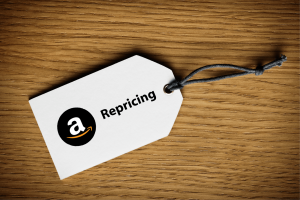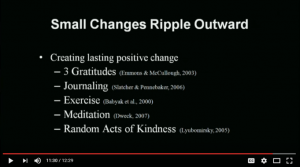September 4, 2016
Entrepreneurs are passionate about their business. After all, passion is a requirement to take the leap from idea to execution. However, before making the leap, an analysis of the opportunity, resource requirements, market forces, and potential profits should be completed. That’s where financial projections come in. Unfortunately, many entrepreneurs don’t know how to realistically project out their company’s prospects. This is harmful for two key reasons:
- It can lead entrepreneurs to pursue ideas that never had promise to begin with.
- It can repel investors, especially professional ones, who don’t see the startup ever producing a return on their money.
A defensible financial projection model can reassure investors that the entrepreneur has analyzed the business’s potential and there is a path to earning a return that justifies the significant early stage risk. It’s always best practice to create a well thought out financial projection model prior to pursuing a business venture. Will the projections end up being completely accurate? Absolutely not. But the exercise will force you to strip away all fluff and focus on the fundamental business. Does the business model work? Is the market opportunity large enough? Can I attract investors with my company’s growth potential? Do I need investors at all? These are all questions that creating a set of financial projections can help answer.
Getting Started
Startup financial projections should have several key features:
- 18 months in length
- Cash accounting method
- Monthly
- “Bottoms up”, unit-by-unit revenue build
I’ve seen entrepreneurs come into early stage investment meetings with 5 year annual projections built using GAAP accounting. Unfortunately, with very early stage startups there’s too much uncertainty to project out 5 years. It is helpful to bring a high level, multi-year model to show investors what you think your business can be long term. But, if you’re serious about raising money, they absolutely need to see a clear road map for the next 12-18 months. Your financial projections should be 18 months in length and built on a monthly basis.
Early stage financial projections should also use the cash accounting method – i.e. recognize revenue when cash is received, not according to accounting rules. This has two primary benefits: (i) it shows investors that you’re not trying to dress up numbers with accounting tricks; and (ii) the model flows down nicely into how much cash you’re burning every month. This ties directly to the amount of funding you will need to raise.

Revenue Build: Bottoms-up, not top-down
A realistic projection model is built bottoms-up, unit-by-unit, then sanity checked against the addressable market. It is NOT projected top-down, arbitrarily based on the addressable market. I’ll explain why in the following simplified example.
You’ve worked hard for months and you’re finally ready to launch your awesome, on demand dog walking app. Assume you’re starting in a large city with 500,000 dog owners. You’re going to acquire customers by offering free trials at pet stores, vet offices, and dog parks. Simultaneously, you’ll run Facebook ads geo-targeting your city for people who like dog groups. You apply different conversion rates to the number of individuals exposed to in-person sales and online ads to predict conversion into users. Your math works out to 5,000 users within 12 months. That’s approximately 1% of the dog owners in the city. That’s a reasonable assumption because of how you got to it – building up to it, not projecting down.
Note, financial projections predicting the same percentage market penetration would be much weaker if you arbitrarily assumed 1% of dog owners in the city would become users (I see 1% thrown around a lot). This is a top-down projection, and to investors can appear poorly thought out. As a result, they will heavily discount your projected user growth.
Unit Economics: Does your business make sense
Now that you have your user growth estimate, you need to predict how much revenue and gross margin each user will contribute. You believe that the average user will spend $ 10 per month and use your app for 12 months based on comparable products in the app store. Since the software is already built, your gross margin on each user is 80% (common assumption with SAAS businesses, usually lower for non-software startups). As such, each user will contribute $ 8 of gross profit per month and have a lifetime value of $ 96 ($ 8 x 12 months).
Acquiring Customers: Always harder than it seems
How do you project out sales and marketing expense for your startup? The cost to acquire each customer (CAC) is notoriously difficult to project for early stage startups. A simple method of approximating your startup’s CAC is to take the industry incumbent’s CAC and multiply it by 5. So if it costs the local dog walking company $ 10 to acquire a new customer, expect it to cost you $ 50. That may seem high, but don’t underestimate how difficult it is to acquire customers as an unknown startup. The local dog walking company may have been around for 20 years and many new customers come to them through word of mouth (i.e. $ 0 CAC). Note, this example model is a very simplified explanation of CAC. This metric can vary widely depending on the acquisition channel.

You may wonder how you can build a sustainable business with CAC that’s 5 times the incumbent’s. You’re correct – it will be very difficult. However, it’s reasonable to assume that your CAC will decrease over time as brand awareness grows and your team gets better at acquiring customers.
To acquire 5,000 customers in a year means that you’ll need to spend $ 250,000 on sales and marketing ($ 50 CAC x 5,000). This cost can include salespersons’ salaries and commission, Google Adword campaigns, social media advertising, events, travel, etc. Note, your sales and marketing spend cannot exceed $ 96 per acquired user (customer lifetime value) for your business to be sustainable.
Fixed Operating Expenses: Cost to support top line growth
At this point, fixed operating expenses need to be factored into the model. What is the necessary fixed cost structure to support this growth projection? How many employees do you need? Is your sales team commission based? How much space do you need to rent? Are there any ongoing license fees you need to pay for your industry? And depending on how early your business is, are there ongoing startup legal costs?
One area that is frequently underestimated, especially in major cities, is office rent. Expect to pay $ 600 to $ 700 per person per month for your office in SF, LA, or NYC. Funny enough, this is about how much a desk at a WeWork coworking space costs in those cities…
And don’t forget to include employer taxes in your projections. A $ 50,000 salary in California can cost the employer over $ 54,000 fully loaded for payroll taxes, Medicare, and Social Security.
Cash Runway: How much money you’ll need
After deducting monthly marketing / sales spend and fixed operating costs from gross profit, you’re left with monthly net cash burn. Use this to determine how much money you need to raise. It’s generally good practice to raise enough cash to cover 18 months of operations. 12 months of focused business building, and 6 months of runway to allow you time to raise the next round. Raise more than that and you may dilute your ownership too much. Raise less and you risk running out of money.
Entrepreneurs will often bridge the funding gap with alternative financing sources. For companies generating revenue, business loans or receivables funding can complement equity funding. Pre-revenue companies, particularly those selling consumer products, can turn to crowdfunding to launch their business. Most investors will like that you’re using non-equity forms of funding because it demonstrates resourcefulness and won’t dilute their ownership.
Putting this together, a picture will emerge of what a startup idea can become and the resources it will require to get there. An entrepreneur can now make a calculated decision whether their idea is worth pursuing. Spending the time upfront to create a well thought out financial projection model will save tremendous time and energy in the future.
You can find the simple projection model referenced here in this Google Sheet.
Business & Finance Articles on Business 2 Community(80)






